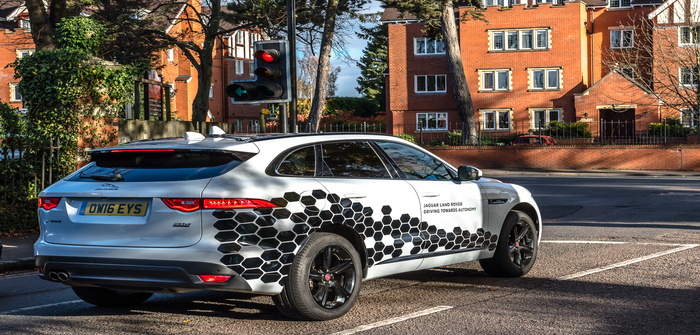The UK CITE Project has entered its second phase, trialling connected car technologies on the road to prepare road networks for AVs. In partnership with Jaguar Land Rover (JLR), it will test emergency electronic brake light warning, emergency vehicle warning, and in-vehicle signage for road works warnings and traffic condition warnings.
The focus of the project is the connected infrastructure, which it developed in phase one of the project. Started in June 2016, it included the preparation of the infrastructure and a vehicle, systems, and gantry application, which will ensure variable roadside messages appear in the vehicle, either on its integrated display or on a smartphone. Trials also took place on Horiba MIRA’s city circuit.
In cooperation with Transport for West Midlands and Coventry City Council, critical infrastructure on urban roads was completed in advance of the installation of 35 of Siemens’s ESCoS roadside units on the M40 and M42 motorways. These units provide the technical platform for real-time data exchange between vehicles and traffic control equipment.
In addition to real-world testing, the UK CITE Project also includes simulation. Horiba MIRA is developing a simulation system to model connected vehicles tested via the UK CITE corridor and Coventry University will be using the data from the live vehicle trials to scale it into a larger virtual environment using simulation modeling.
“This next phase of testing is critical in testing the capabilities and providing valuable metrics of the connected network we’re developing. The strides we’re making as part of the UK CITE Project are creating vital technologies to enable a safer and more efficient road network”, said Claire Lewis, senior business development manager at lead consortium partner Visteon Engineering Services, which is handling the overall technical architecture of the project, including multipath embedded software and a smartphone application.
Colin Lee, JLR V2X manager, said, “To realise the full benefit of self-driving cars, we need to understand the infrastructure that’s needed to support them. Connectivity not only takes us a step closer to making this a reality, but it also creates the platform to bring a great array of connected safety features to our customers in the near future. We’re working with some fantastic global experts across industry and academia and we’re eager to take the project into this next phase of testing.”
By Illya Verpraet


